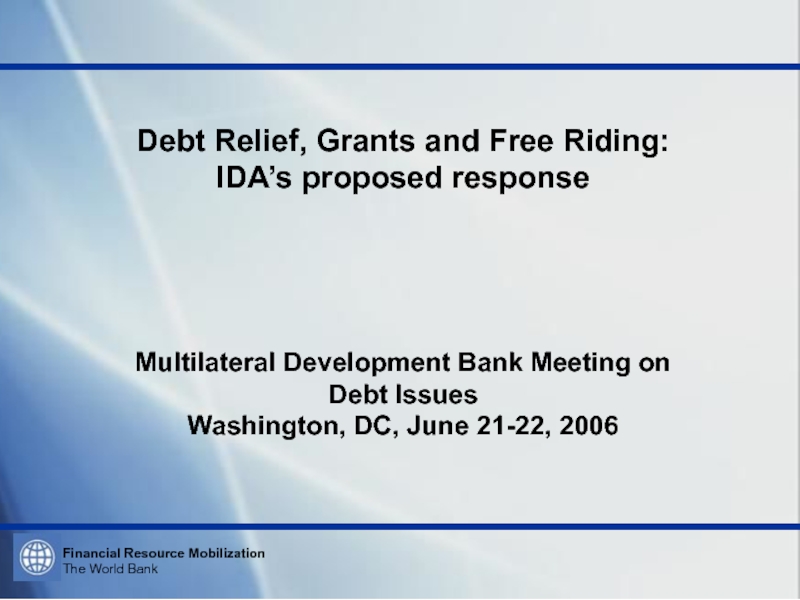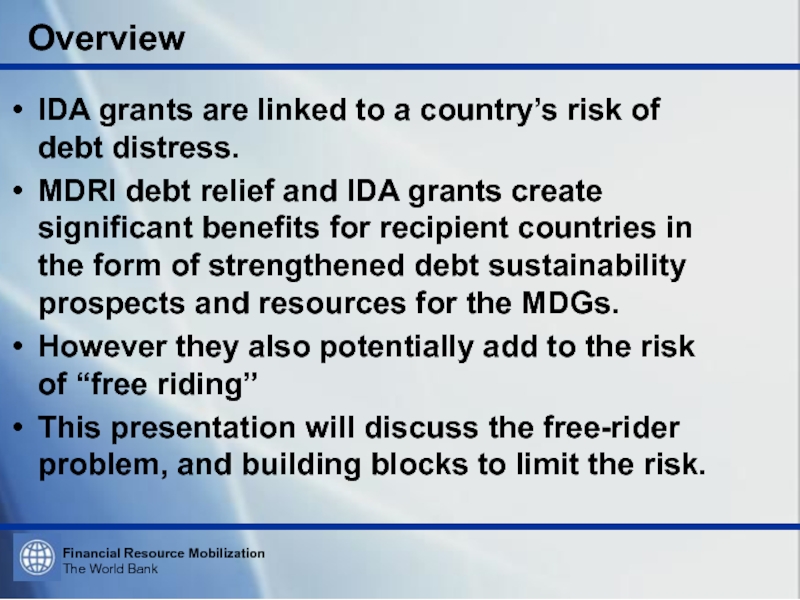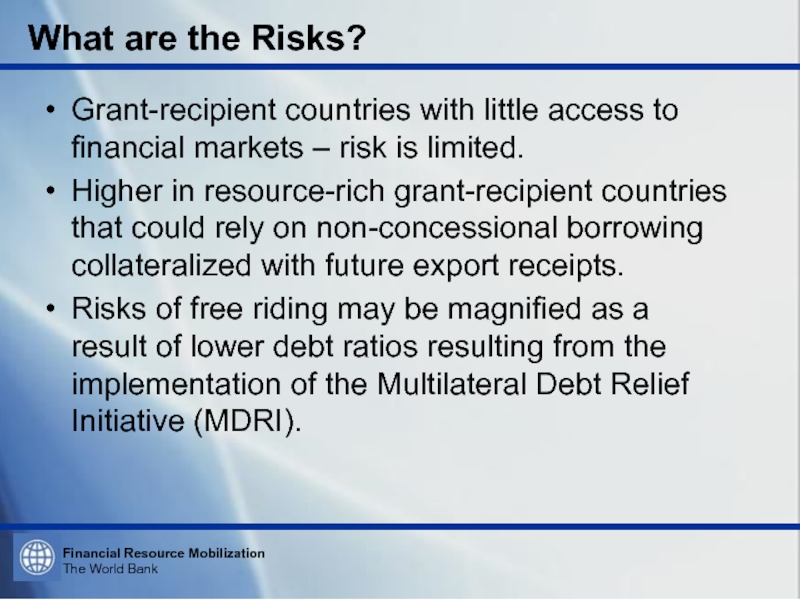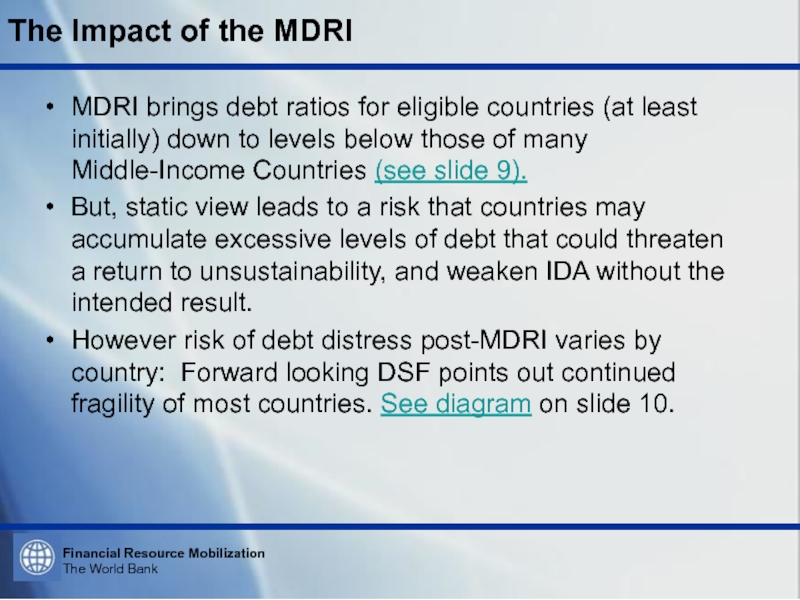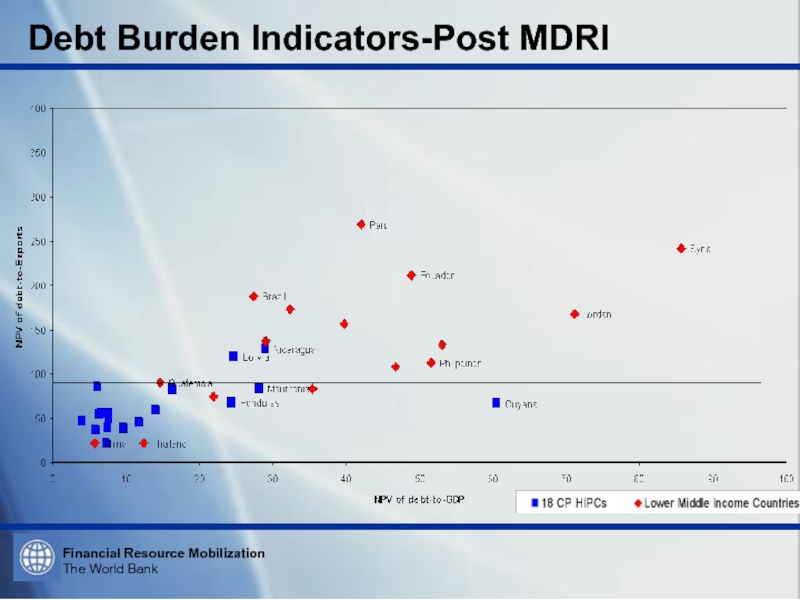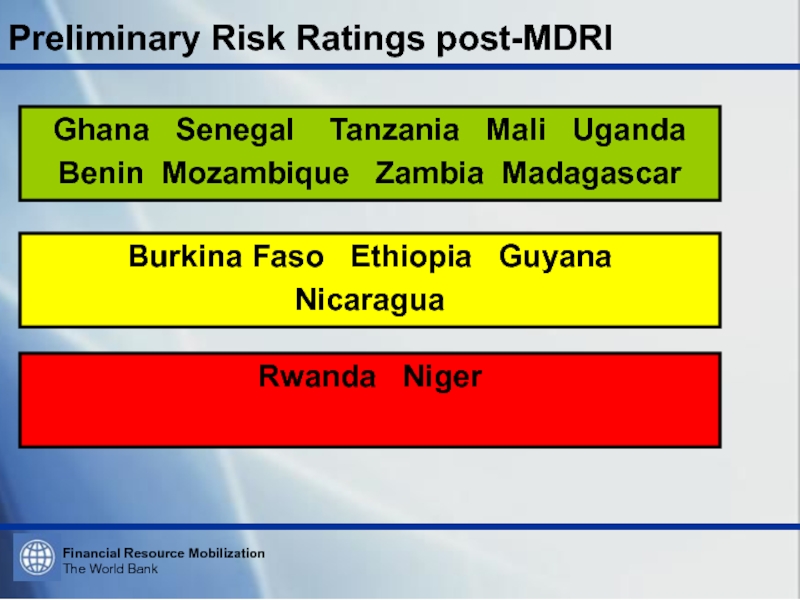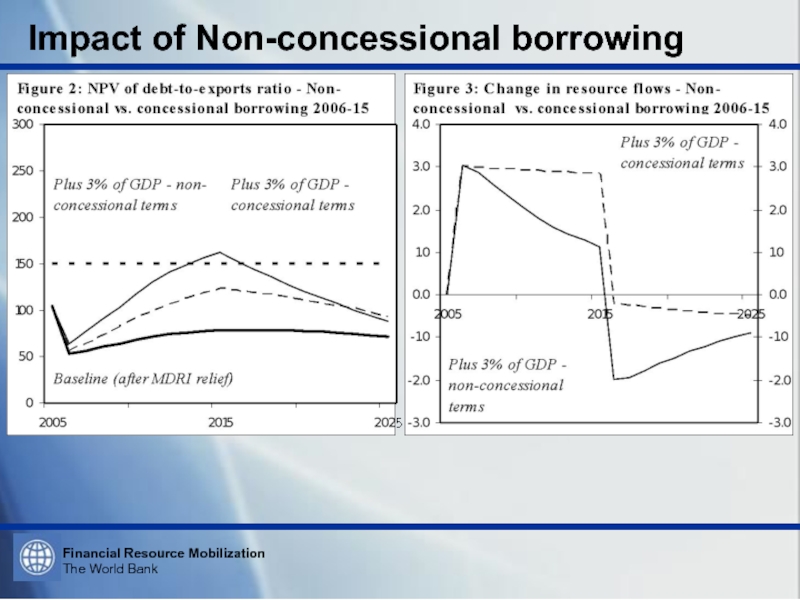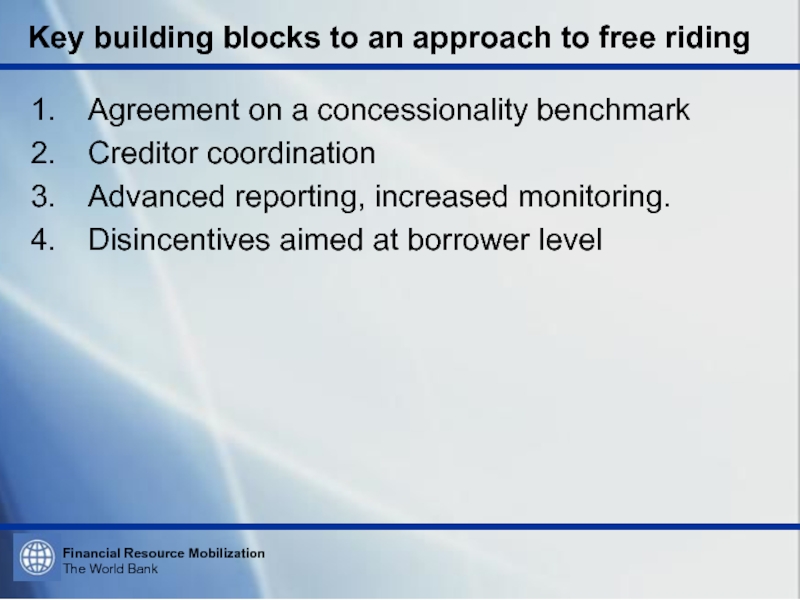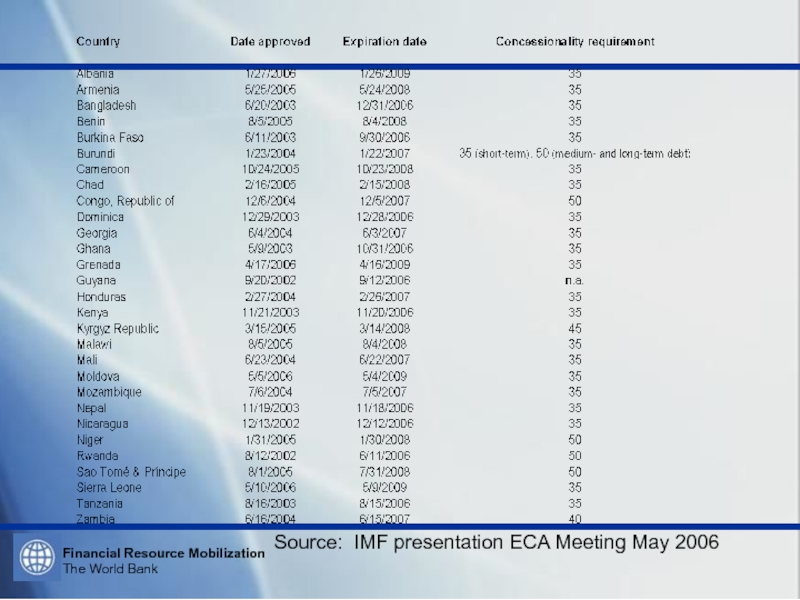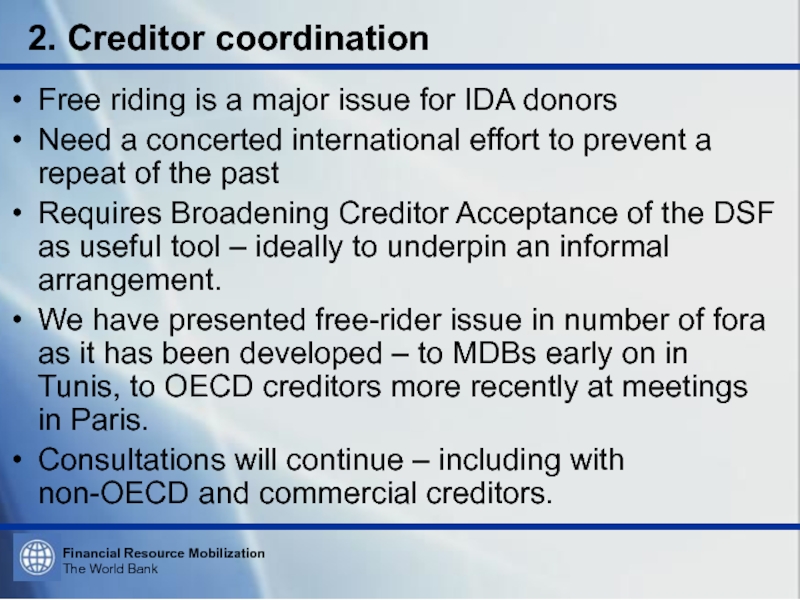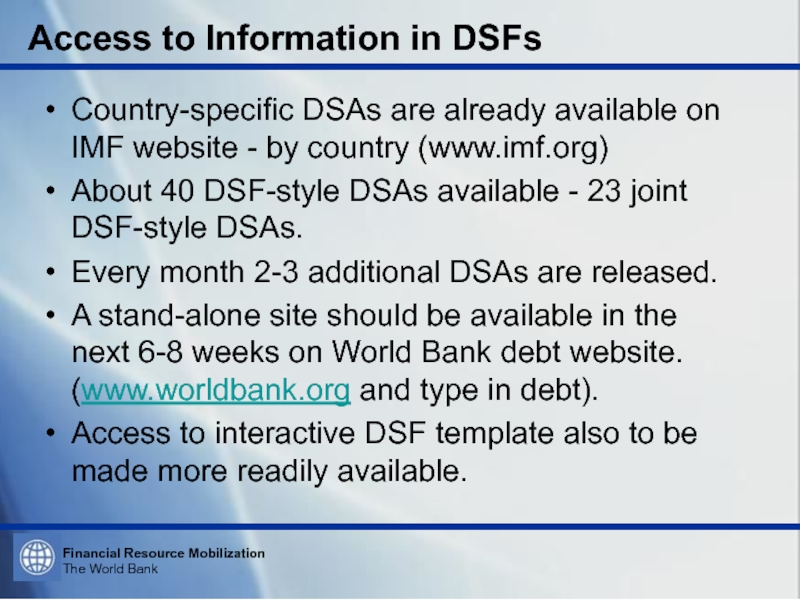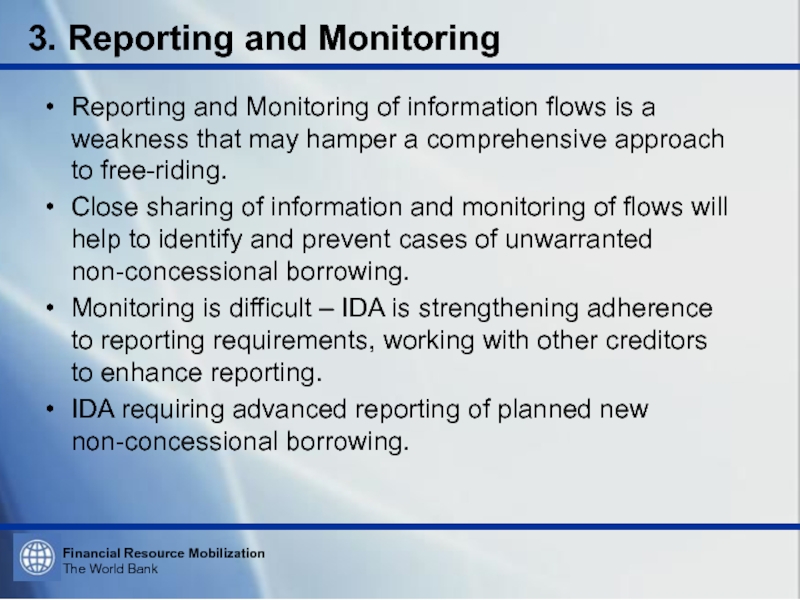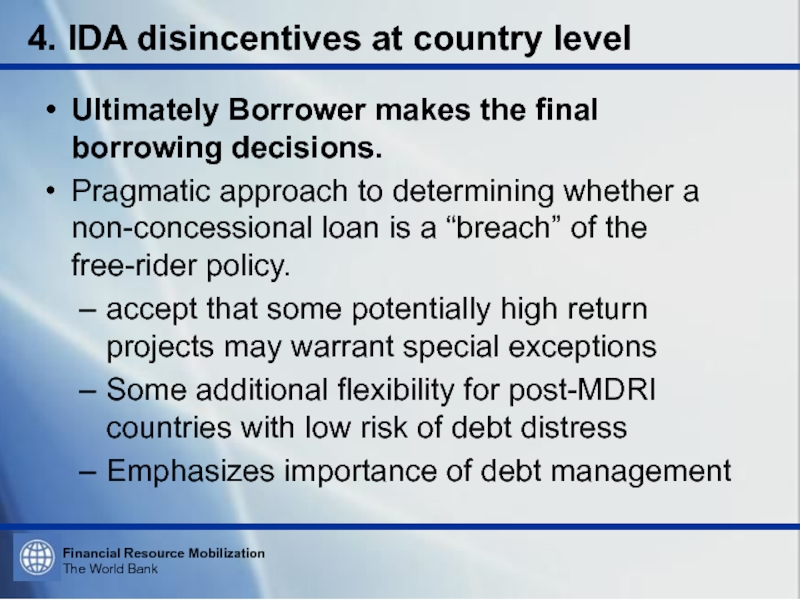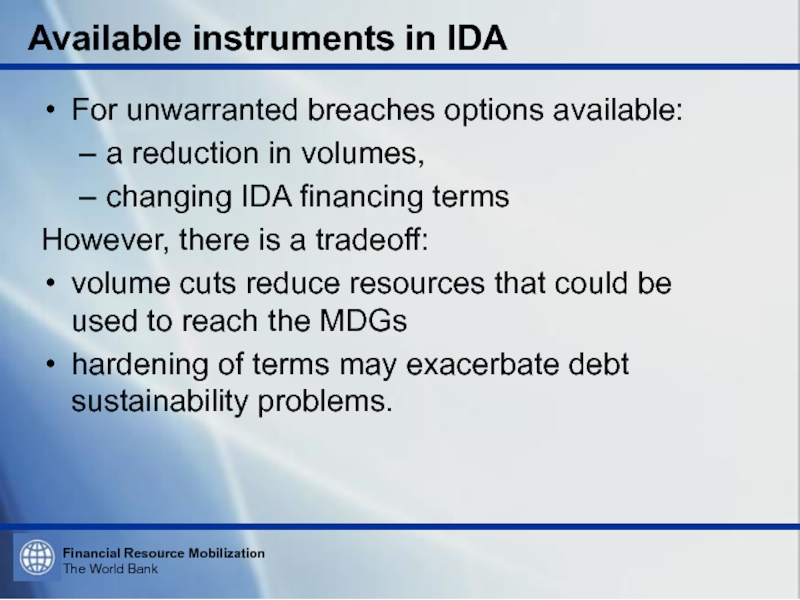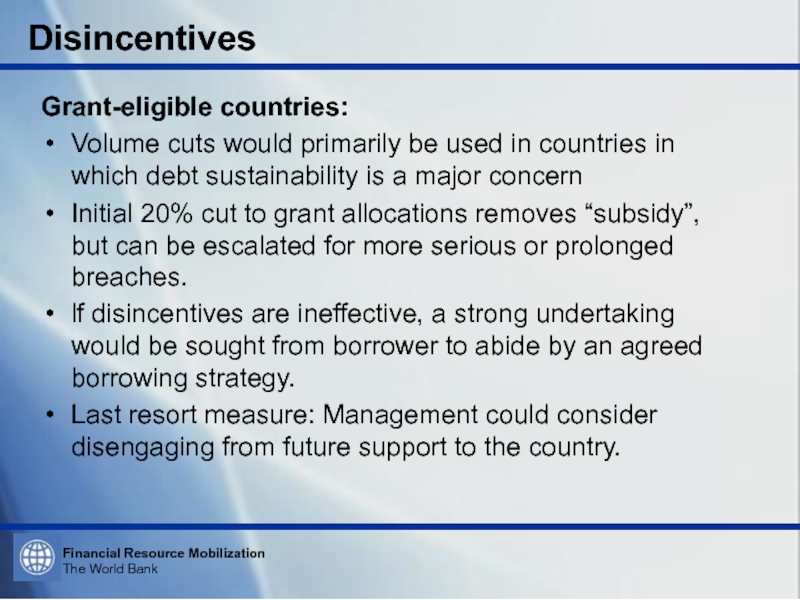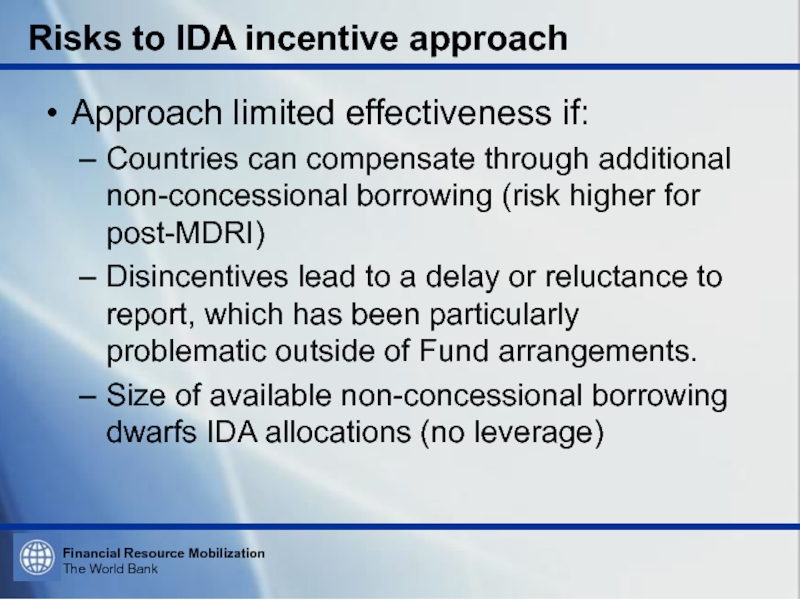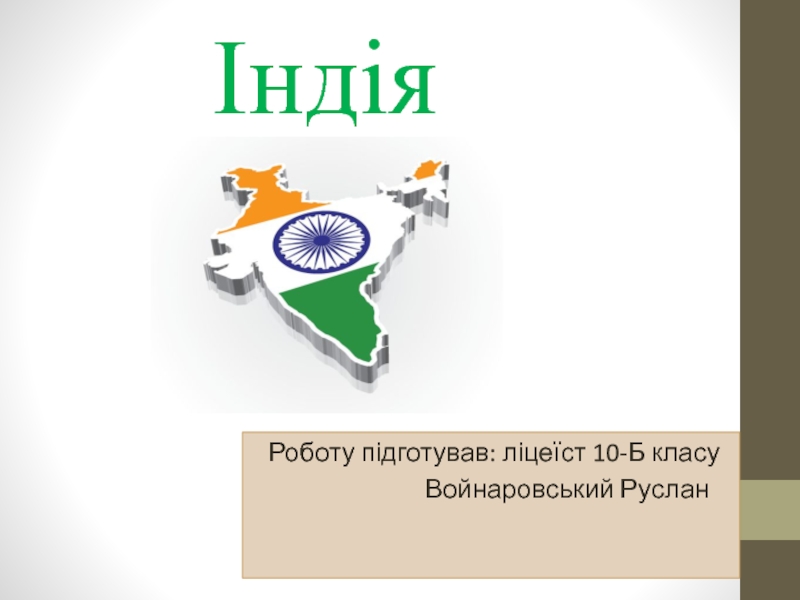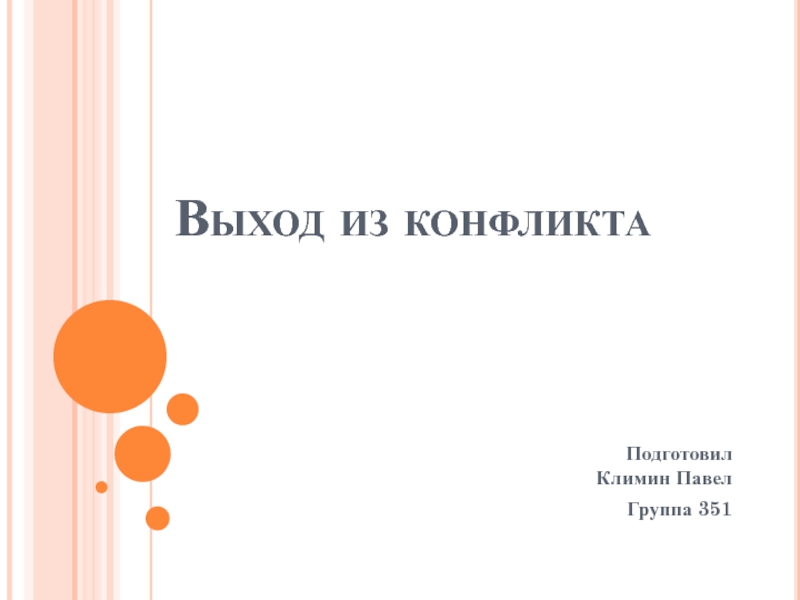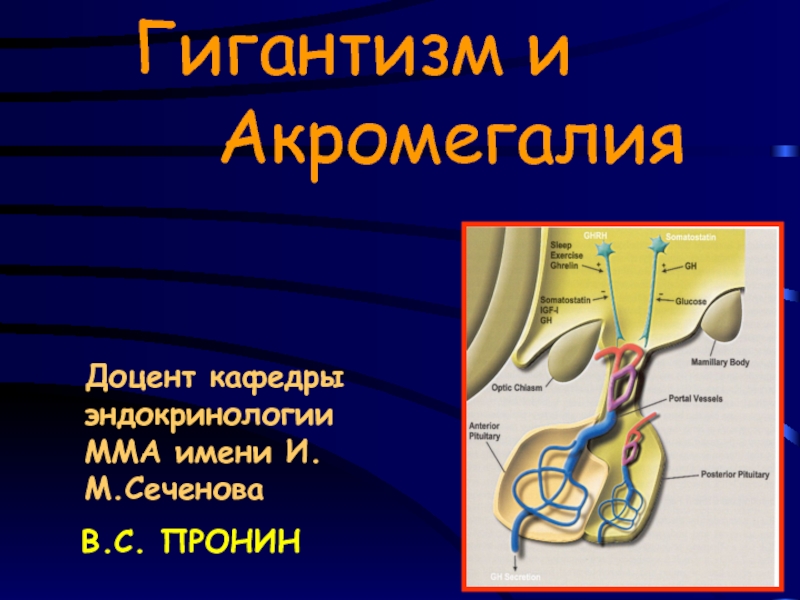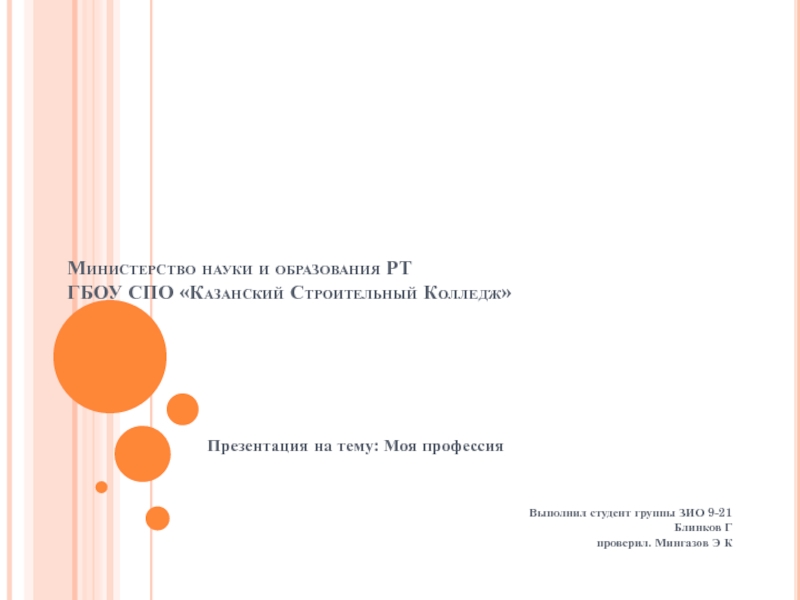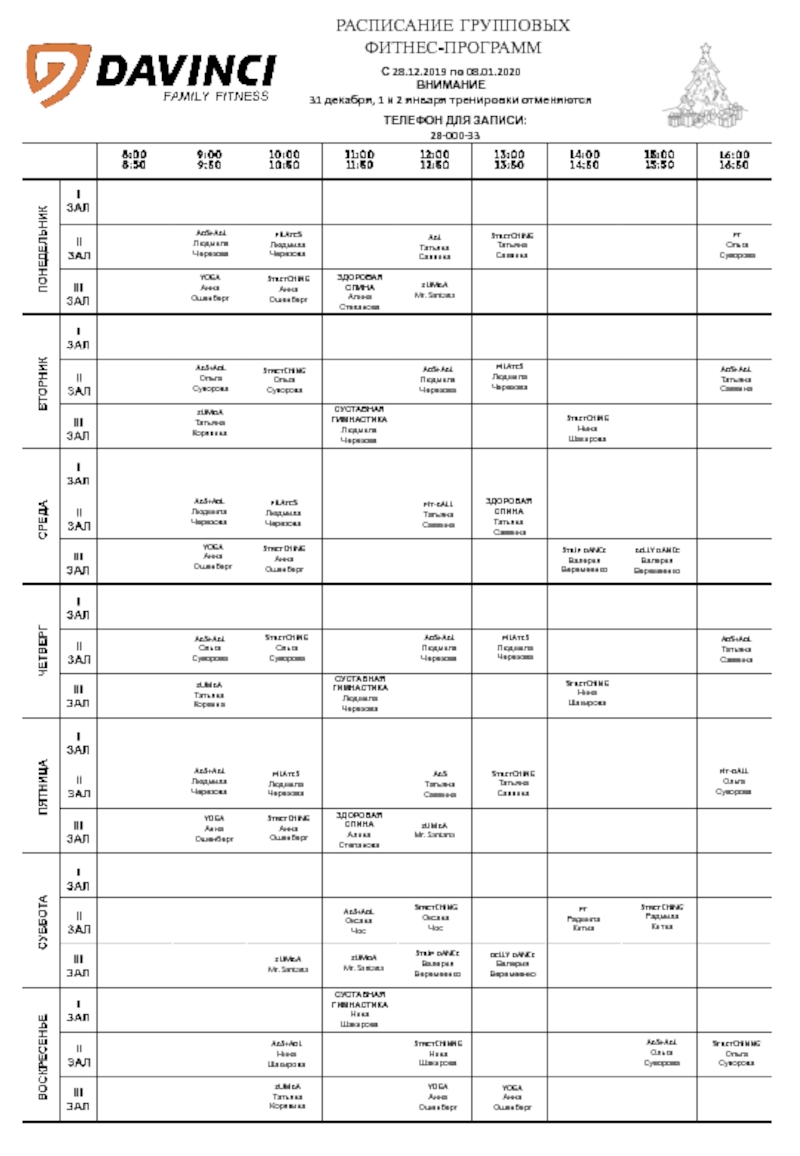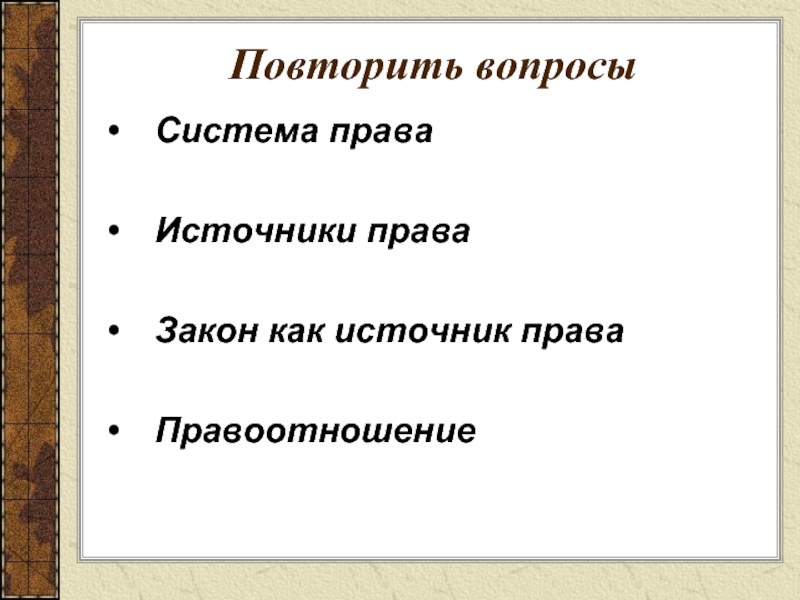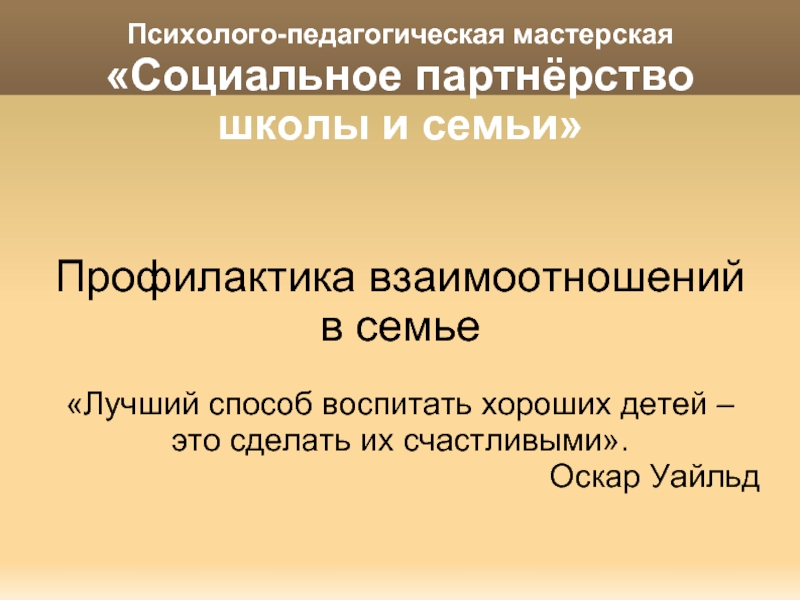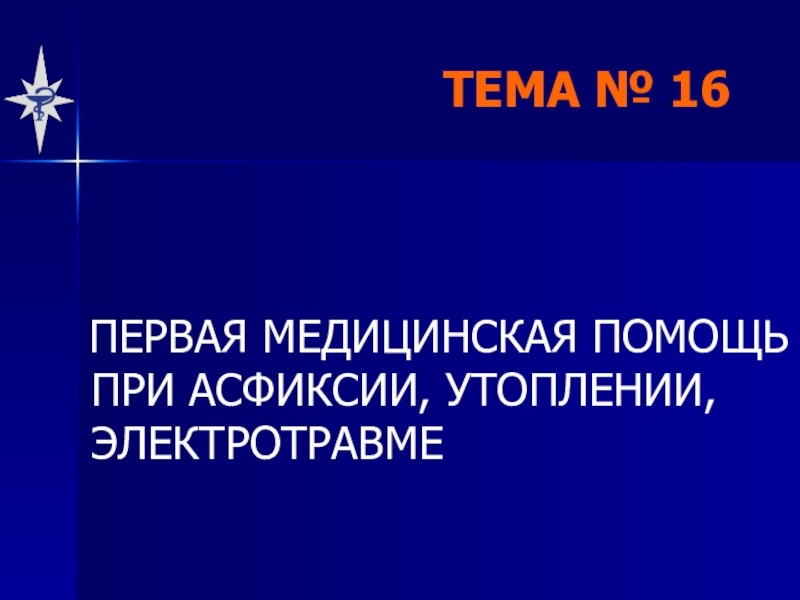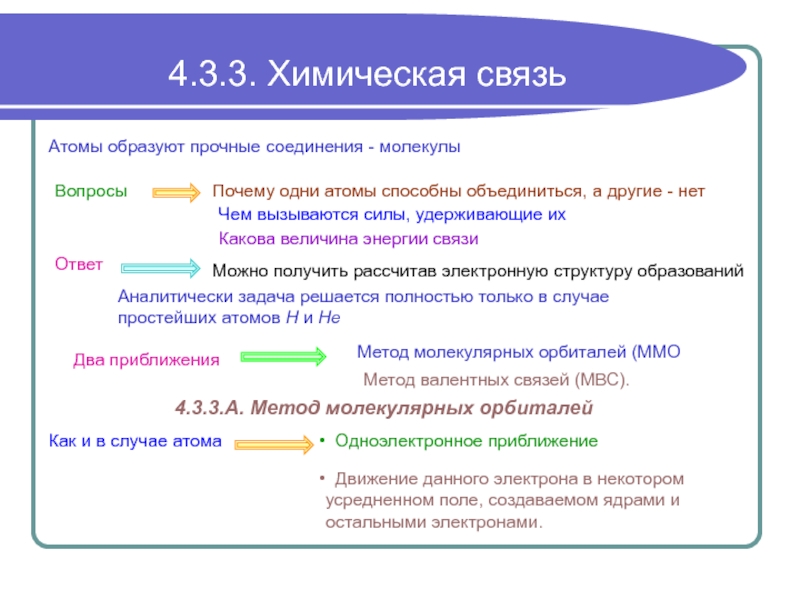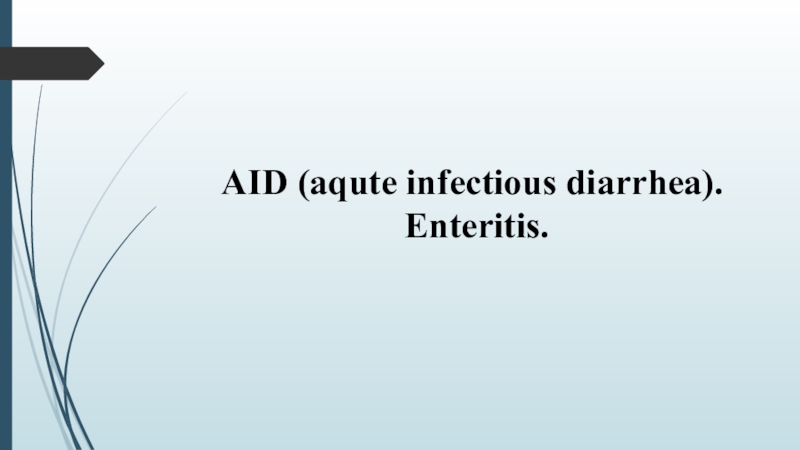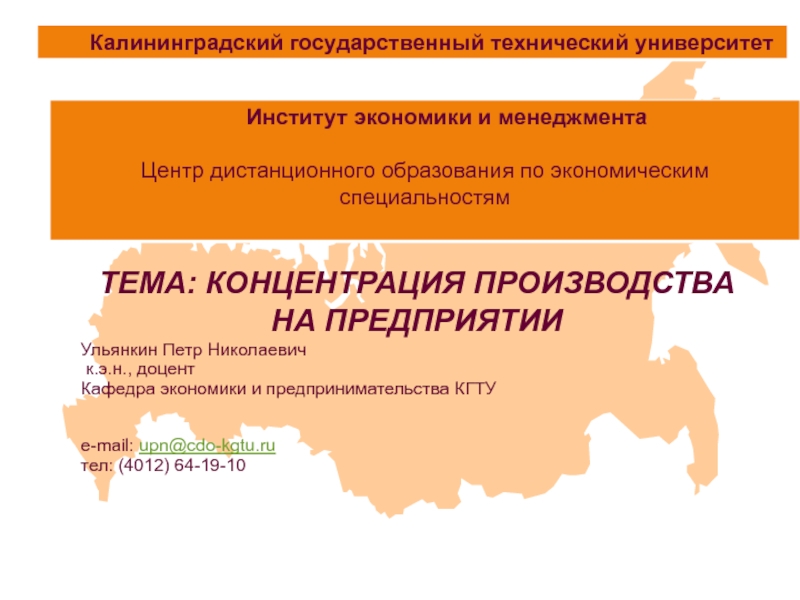Разделы презентаций
- Разное
- Английский язык
- Астрономия
- Алгебра
- Биология
- География
- Геометрия
- Детские презентации
- Информатика
- История
- Литература
- Математика
- Медицина
- Менеджмент
- Музыка
- МХК
- Немецкий язык
- ОБЖ
- Обществознание
- Окружающий мир
- Педагогика
- Русский язык
- Технология
- Физика
- Философия
- Химия
- Шаблоны, картинки для презентаций
- Экология
- Экономика
- Юриспруденция
Debt Relief, Grants and Free Riding: IDA’s proposed response Multilateral
Содержание
- 1. Debt Relief, Grants and Free Riding: IDA’s proposed response Multilateral
- 2. OverviewIDA grants are linked to a country’s
- 3. What is free riding?the indirect cross-subsidization, through
- 4. What are the Risks?Grant-recipient countries with little
- 5. The Impact of the MDRIMDRI brings debt
- 6. Debt Burden Indicators-Post MDRI
- 7. Preliminary Risk Ratings post-MDRIRwanda NigerBurkina Faso
- 8. Impact of Non-concessional borrowing
- 9. Key building blocks to an approach to
- 10. Concessionality benchmark for decisionsConcessional borrowing: multiples ways
- 11. Source: IMF presentation ECA Meeting May 2006
- 12. 2. Creditor coordination Free riding is a major
- 13. Access to Information in DSFsCountry-specific DSAs are
- 14. Countries subject to IDA free-riding policy
- 15. 3. Reporting and MonitoringReporting and Monitoring of
- 16. 4. IDA disincentives at country levelUltimately Borrower
- 17. Available instruments in IDAFor unwarranted breaches options
- 18. DisincentivesGrant-eligible countries:Volume cuts would primarily be used
- 19. Risks to IDA incentive approach Approach limited effectiveness
- 20. Conclusion No magic bullet to free rider problemRequires
- 21. End
- 22. Скачать презентанцию
OverviewIDA grants are linked to a country’s risk of debt distress.MDRI debt relief and IDA grants create significant benefits for recipient countries in the form of strengthened debt sustainability prospects and
Слайды и текст этой презентации
Слайд 1Debt Relief, Grants and Free Riding: IDA’s proposed response Multilateral Development
Bank Meeting on
Debt Issues
Washington, DC, June 21-22, 2006
Слайд 2Overview
IDA grants are linked to a country’s risk of debt
distress.
MDRI debt relief and IDA grants create significant benefits for
recipient countries in the form of strengthened debt sustainability prospects and resources for the MDGs.However they also potentially add to the risk of “free riding”
This presentation will discuss the free-rider problem, and building blocks to limit the risk.
Слайд 3What is free riding?
the indirect cross-subsidization, through IDA grants and
debt relief, of other creditors offering non-concessional terms
Higher risk of
debt distressLower risk of debt distress
IDA
Grants and debt relief
Non-concessional lending
Other creditors
Слайд 4What are the Risks?
Grant-recipient countries with little access to financial
markets – risk is limited.
Higher in resource-rich grant-recipient countries that
could rely on non-concessional borrowing collateralized with future export receipts. Risks of free riding may be magnified as a result of lower debt ratios resulting from the implementation of the Multilateral Debt Relief Initiative (MDRI).
Слайд 5The Impact of the MDRI
MDRI brings debt ratios for eligible
countries (at least initially) down to levels below those of
many Middle-Income Countries (see slide 9).But, static view leads to a risk that countries may accumulate excessive levels of debt that could threaten a return to unsustainability, and weaken IDA without the intended result.
However risk of debt distress post-MDRI varies by country: Forward looking DSF points out continued fragility of most countries. See diagram on slide 10.
Слайд 7Preliminary Risk Ratings post-MDRI
Rwanda Niger
Burkina Faso Ethiopia
Guyana
Nicaragua
Ghana Senegal Tanzania Mali Uganda
Benin
Mozambique Zambia MadagascarСлайд 9Key building blocks to an approach to free riding
Agreement on
a concessionality benchmark
Creditor coordination
Advanced reporting, increased monitoring.
Disincentives aimed at borrower
levelСлайд 10Concessionality benchmark for decisions
Concessional borrowing: multiples ways to measure it.
DAC
ODA definition used for statistical purposes: 25% concessional using 10%
discount rate.Concessionality benchmark of at least 35% concessional using CIRR discount rates from IMF PRGF programs more realistic.
35% is a proven benchmark in IMF programs for borrowing in LICs that does not endanger sustainability
35% used by IDA in free-rider context: may be higher/lower if IMF program requires it.
Слайд 122. Creditor coordination
Free riding is a major issue for IDA
donors
Need a concerted international effort to prevent a repeat of
the pastRequires Broadening Creditor Acceptance of the DSF as useful tool – ideally to underpin an informal arrangement.
We have presented free-rider issue in number of fora as it has been developed – to MDBs early on in Tunis, to OECD creditors more recently at meetings in Paris.
Consultations will continue – including with non-OECD and commercial creditors.
Слайд 13Access to Information in DSFs
Country-specific DSAs are already available on
IMF website - by country (www.imf.org)
About 40 DSF-style DSAs available
- 23 joint DSF-style DSAs. Every month 2-3 additional DSAs are released.
A stand-alone site should be available in the next 6-8 weeks on World Bank debt website. (www.worldbank.org and type in debt).
Access to interactive DSF template also to be made more readily available.
Слайд 153. Reporting and Monitoring
Reporting and Monitoring of information flows is
a weakness that may hamper a comprehensive approach to free-riding.
Close
sharing of information and monitoring of flows will help to identify and prevent cases of unwarranted non-concessional borrowing.Monitoring is difficult – IDA is strengthening adherence to reporting requirements, working with other creditors to enhance reporting.
IDA requiring advanced reporting of planned new non-concessional borrowing.
Слайд 164. IDA disincentives at country level
Ultimately Borrower makes the final
borrowing decisions.
Pragmatic approach to determining whether a non-concessional loan is
a “breach” of the free-rider policy.accept that some potentially high return projects may warrant special exceptions
Some additional flexibility for post-MDRI countries with low risk of debt distress
Emphasizes importance of debt management
Слайд 17Available instruments in IDA
For unwarranted breaches options available:
a reduction in
volumes,
changing IDA financing terms
However, there is a tradeoff:
volume cuts reduce
resources that could be used to reach the MDGshardening of terms may exacerbate debt sustainability problems.
Слайд 18Disincentives
Grant-eligible countries:
Volume cuts would primarily be used in countries in
which debt sustainability is a major concern
Initial 20% cut to
grant allocations removes “subsidy”, but can be escalated for more serious or prolonged breaches. lf disincentives are ineffective, a strong undertaking would be sought from borrower to abide by an agreed borrowing strategy.
Last resort measure: Management could consider disengaging from future support to the country.
Слайд 19Risks to IDA incentive approach
Approach limited effectiveness if:
Countries can compensate
through additional non-concessional borrowing (risk higher for post-MDRI)
Disincentives lead to
a delay or reluctance to report, which has been particularly problematic outside of Fund arrangements.Size of available non-concessional borrowing dwarfs IDA allocations (no leverage)
Слайд 20Conclusion
No magic bullet to free rider problem
Requires concerted international effort
by all actors.
Efforts to enhance creditor coordination will continue.
Ongoing efforts
to improve debt management capacity should help.Efforts to improve information on non-concessional borrowing and adherence to reporting requirements need to continue.
